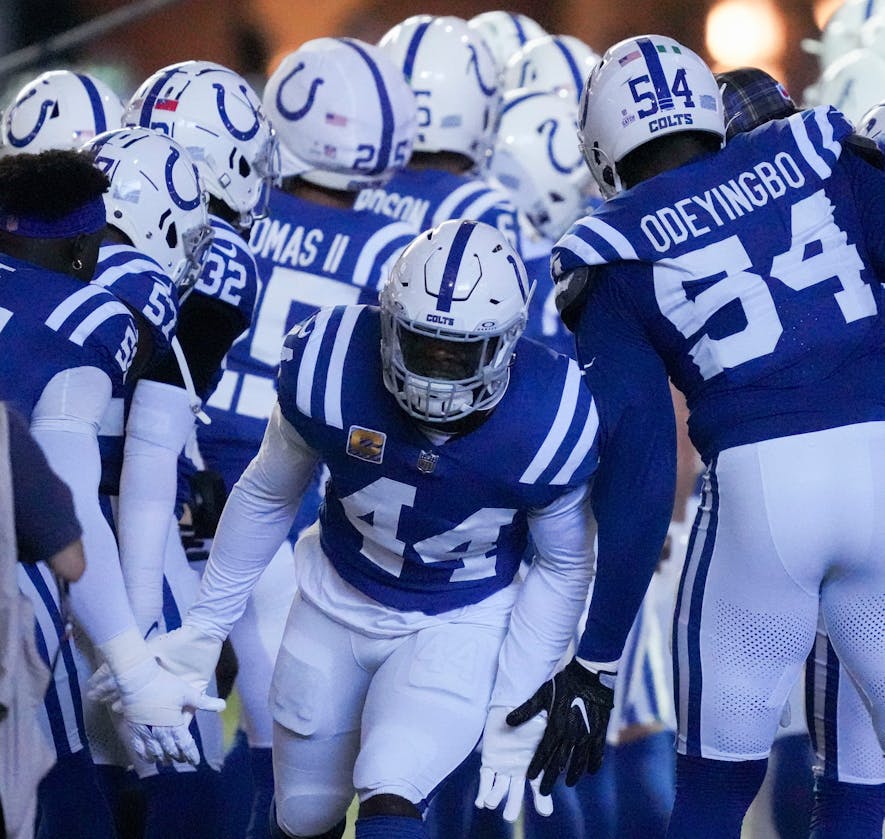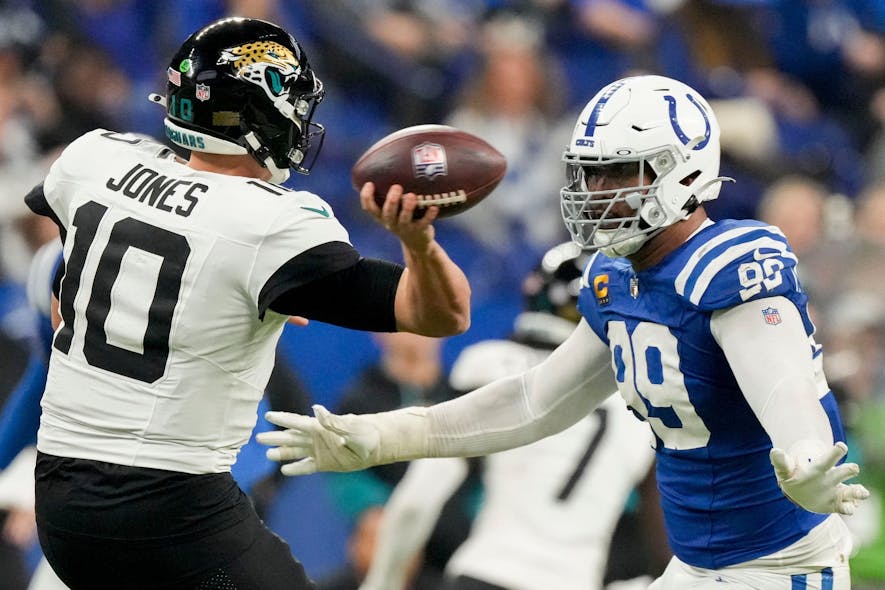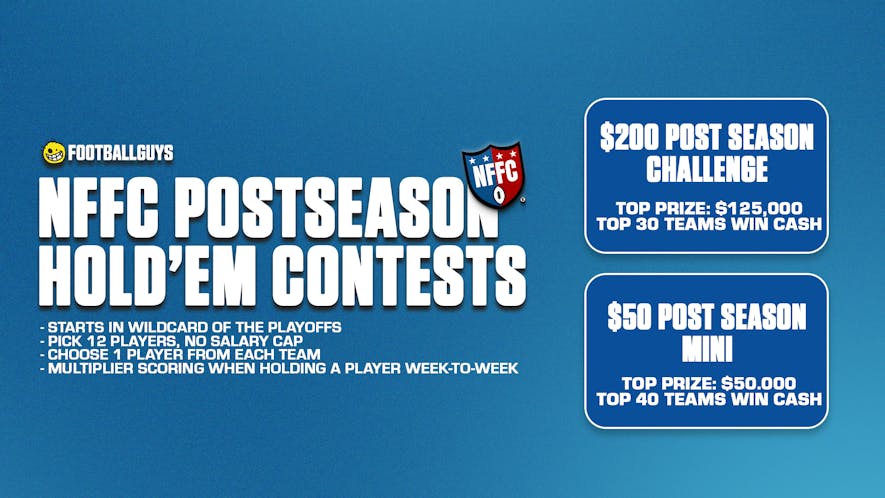Reading the New Defense returns for its third season at Footballguys.com. The column investigates how new defensive coordinators impact individual defensive players' fantasy prospects for the looming season.
Eleven NFL defenses have new coordinators in 2024. While three of them offer general scheme consistency year over year, eight more promise significant changes to their new environs in 2025. Two of these coordinators' track records suggest they will change between even- and odd-front nomenclature.
Previous installments: Falcons | Saints | Bears | Cowboys | Jaguars
Anarumo's Mulligan
The Colts are one of nine teams changing coordinators while remaining in the same base defense year over year. Lou Anarumo lost his job as the Bengals' defensive coordinator but landed on his feet in Indianapolis, where he's assumed the same role.
Anarumo succeeds Gus Bradley, who held head coaching jobs and defensive coordinator roles for 16 NFL seasons. Four of his teams finished in the top ten in points allowed. Eleven finished in the bottom ten. Anarumo, meanwhile, has guided one defense into the top half of the league in points allowed in seven seasons as a coordinator.
Gus Bradley was arguably the last of his kind, a defensive coordinator who relied on players to execute a simple 4-3, Cover-3 scheme and play fast. This is a variation of the scheme that new Falcons coordinator Jeff Ulbrich disavowed upon his arrival in Atlanta last winter. Anarumo, meanwhile, adjusts his game plan from week to week using multiple fronts and coverages based on his opponent.
Anarumo's defense resembles Bradley's in that, at its core, it's an under front with MOFC coverage structures. Bradley's scheme helped propel nose tackle Grover Stewart and strong safety Nick Cross to fantasy utility. His frequent zone coverages helped elevate linebacker Zaire Franklin to the top of the IDP leaderboard. Anarumo's more diverse approach shaves off some of these players' upside.
Scheme Differences That Matter
Almost all NFL defenses utilize a 4-2-5 nickel subpackage for the majority of their defensive reps. Unlike Tom Landry's 4-3 Flex defense, the defensive ends of the current-day 4-2-5 line up wide of the offensive tackles. Twenty-first-century NFL defenses differ from one another in three primary ways that impact IDP statistical output.
Zone Vs. Man Coverage
Zone coverage by a defense significantly improves the inside linebackers' rate of tackling per snap. A coach's historical tendencies and the personnel available to him for the upcoming season empower us to make educated guesses as to how often a defense will use zone coverage and to an extent, how efficiently the inside linebackers will make tackles.
#FFIDP - Most efficient coverage schemes for LB tackling in 2024:
— Jon Macri (@PFF_Macri) June 9, 2025
Cover-2: 15.8%
Cover-6: 15.7%
Cover-4: 14.9%
Cover-3: 14.5%
AVERAGE LB TKL EFFICIENCY: 13.1%
Cover-1: 10.4%
Cover-0: 7.9%
2-MAN: 7.5%
Reminder: Zone-heavy defenses are a cheat code for IDP while man-heavy ones… https://t.co/FXZdUm3Jdd
Only the Vikings played less man coverage than the Colts in 2024 (14.9%), and Gus Bradley led the league in the deployment of Cover-3 (51.7%). Lou Anarumo played man coverage a quarter of the time, near the league average rate, in Cincinnati.
One High Vs. Two High Safeties
Two-high coverages have received disproportionate attention from mainstream media in this decade. Only the Vikings showed them more than half the time in 2024. Two-high coverages have, however, grown in use over the past ten years and made volume tacklers at the safety position harder to spot. Reduced competition from safeties in the middle of the field marginally improves inside linebackers' tackling prospects.
Meanwhile, a team that plays predominantly one-high coverages can infuse one of its two safeties with a statistical uptick if it deploys one, typically the strong safety, close to the line of scrimmage more frequently than the other. For reference, Pro Football Focus collects tackle efficiencies for safeties by alignment in the defense. PFF's Jon Macri reports the data, which indicates, unsurprisingly, that playing at the second level results in a tackle most often.
2024 proved lucrative for fantasy gamers chasing strong safeties in one-high defenses. The in-season version of this column closed by debriefing this phenomenon.
For years, Lou Anarumo preferred one-high structures (middle-of-the-field closed or MOFC). Like several of his peers, Anarumo increased his use of two-high structures (middle-of-the-field open or MOFO) in 2024. At 43.6%, his use of two-high structures ranked as the league's sixth most frequent.
...only got 1 snap of dime from Anarumo in the preseason. But good, quick visual on what the #Bengals defense will look like personnel-wise on those subpackage downs
— Ben Fennell (@BenFennell_NFL) September 4, 2023
Bengals about 15% dime package defense - steadily in middle of the pact of the league usage pic.twitter.com/lDV96pVnZy
Rush Strategy
Some teams ask their pass rushers to mush rush or two-gap, while select linemen on other teams have the green light to get upfield with reckless abandon. The former duties are integral to run defense, wherein the defender must account for more than one running lane. Green-lit defensive tackles, meanwhile, can shoot one gap and have higher sack upside.
DeForest Buckner does a great job reducing his hitting surface as he slants. @DeForestBuckner penetrates & blows up the run play for the TFL! #stoptherun #colts pic.twitter.com/Nol2DHsfqm
— DLineVids (@dlinevids1) January 2, 2022
Colts Defensive Tackles
D.J. Reader played the nose for Lou Anarumo from 2020 to 2023. The veteran collected 123 combined tackles and 3.0 quarterback sacks in 44 starts. He showed he could be a useful piece for fantasy gamers, recording 52 tackles and 2.5 sacks for the Texans in 2019; however, Anarumo's multiple fronts had the effect of scaling back his production. Reader was commonly responsible for clogging up the middle rather than getting upfield.
In 45 starts for Gus Bradley, Grover Stewart collected 185 combined tackles and 8.0 sacks. Soon to be 32 years old, Stewart's production will almost certainly decline under Lou Anarumo.
While Stewart clogs the middle, DeForest Buckner returns as the undertackle. One of the league's best interior disruptors, Buckner should maintain his role in Anarumo's defense. Both Buckner and Stewart should see all the work they can handle, as the Colts' depth at defensive tackle is untested at best.
Colts Edge Defenders
Lou Anarumo will sometimes use an asymmetrical front with the nose tackle over the center flanked by a strong-side defensive end. The weakside end will bookend the undertackle.
Sam Hubbard retired after Anarumo left Cincinnati. Despite never developing as an impactful pass rusher, Hubbard thrived on the strong side in Anarumo's defense. In their six seasons together, Hubbard made 359 combined tackles in 88 starts for Anarumo.
Incumbent starting defensive end Kwity Paye, a powerful player and stout run defender, is a great fit for the strong side in the new scheme. Paye also recorded 8.5 and 8.0 sacks in his last two seasons. He was a traits-based first-round draft selection in 2021 who needed to develop. Still only 26, Paye may yet grow into a player capable of double-digit sack totals. If he can approach Hubbard's tackle totals, he'll emerge as an impact player for the Colts and fantasy gamers alike.
2024 first-rounder Laiatu Latu should emerge from camp as the starter opposite Paye. Like Trey Hendrickson, the Bengals' weakside defensive end, Latu has the higher ceiling as a sack artist and lower floor as a tackler.
Veteran Samson Ebukam will rotate with Latu. The 30-year-old journeyman marked a career high with 9.5 sacks in 2023 but missed last season with a torn Achilles.
JT Tuimoloau will back up Paye. Veteran Tyquan Lewis could be a fifth edge defender playing significant snaps.
The asymmetrical 4-3 with disparate roles will likely keep any Colts edge defender from DE1 status for lack of volume. In contrast, some 3-4 outside linebackers see larger roles in three-man rotations (e.g., Rams and Steelers).



